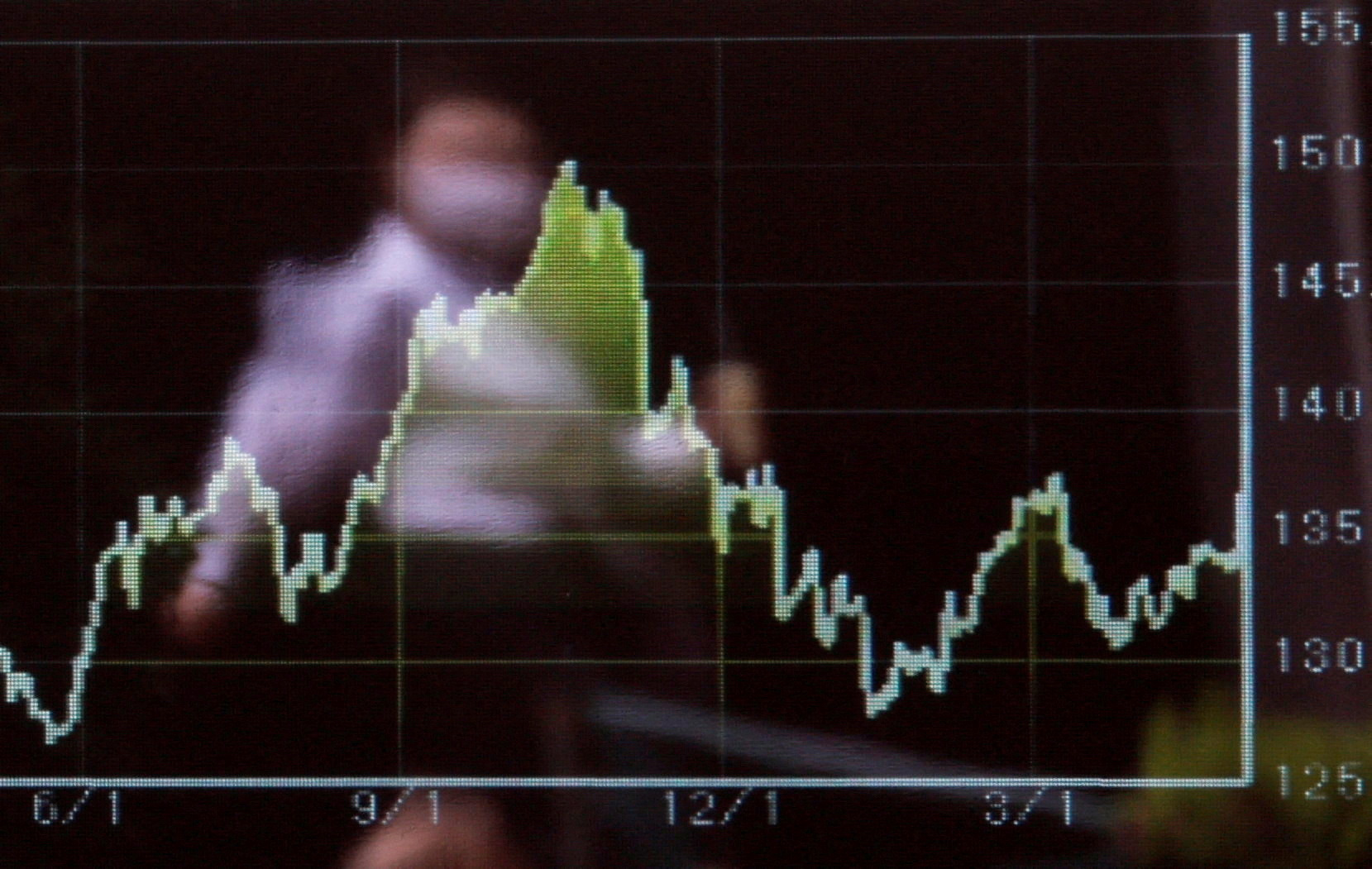[ad_1]

A passerby is reflected on an electric monitor displaying the graph of recent moments of the Japanese yen exchange rate against the U.S. dollar outside a brokerage in Tokyo, Japan May 2, 2023. REUTERS/Issei Kato/File photo Acquire Licensing Rights
TOKYO, Oct 2 (Reuters) – Asia’s stock markets made a tentative start to the fourth quarter in holiday-thinned trade on Monday, nudging sideways while the dollar held firm and a last-minute deal to avert a U.S. government shutdown lifted S&P 500 futures.
Markets in India, Hong Kong and China were closed for a holiday.
Japan’s Nikkei (.N225) jumped as much as 1.7%, before retreating to flat in the mid-afternoon. The yen fell to within a whisker of 150-per-dollar and its weakness is a boon for exporters’ and the pricing of their foreign earnings in yen.
An eleventh-hour deal to avoid a U.S. government shutdown, struck over the weekend, also helped the mood and lifted U.S. stock futures by 0.5% in Asia. The weekend’s stopgap funding bill allowed the government to keep operating through Nov. 17, and means key data releases including Friday’s monthly payrolls report can go ahead on time.
European futures rose 0.2%.
“The shutdown risks are only delayed, not eliminated,” TD Securities strategists wrote in a client note.
“A sense of reduced uncertainty is likely to drive a small relief in markets,” but “market volatility is likely to remain elevated as investors wait for the next catalyst, which is likely to be top-tier data.”
Japanese stocks were also boosted by the Bank of Japan’s quarterly Tankan survey, which showed an improvement in business sentiment. MSCI’s broadest index of Asia-Pacific shares outside Japan (.MIAPJ0000PUS) was flat.
DOLLAR RESILIENCE
Bond and foreign exchange trade remain driven by an anticipation of U.S. interest rates staying high and selling in Japanese bonds on Monday drew a central bank response.
Benchmark 10-year Japanese government bond yields rose by a basis point to their highest for a decade at 0.775%. The Bank of Japan said it would buy bonds with 5-10 years to maturity on Wednesday, with the size of purchases to be announced then. Futures bounced on the news.
In the Treasury market 10-year yields rose 4 bps to 4.6124% and the two-year yield rose 3.7 bps to $5.0832%.
The dollar stood tall in currency markets, though was stopped short of last week’s milestone highs save for against the yen , where it hit its highest since last October at 149.74 yen.
“Relative U.S. growth resilience and (a) hawkish Fed are factors that continue to underpin support for the dollar, until U.S. data starts to show more material signs of softening,” said OCBC currency strategist Christopher Wong.
Mixed China factory surveys and an expectation of no changes to rates settings at central bank meetings in the coming days kept pressure on the Australian and New Zealand dollars.
The Aussie fell 0.5% to $0.6400 and the kiwi slipped 0.2% to $0.5986. The euro was a touch weaker at $1.0564.
Crude oil steadied after late-week falls
Brent December crude futures rose 16 cents, or 0.2%, to $92.36 a barrel. U.S. West Texas Intermediate crude futures gained 20 cents, or 0.1%, to $90.99 a barrel.
Reporting by Kevin Buckland. Additional reporting by Tom Westbrook in Singapore; Editing by Edwina Gibbs & Simon Cameron-Moore
Our Standards: The Thomson Reuters Trust Principles.
[ad_2]
Source link
